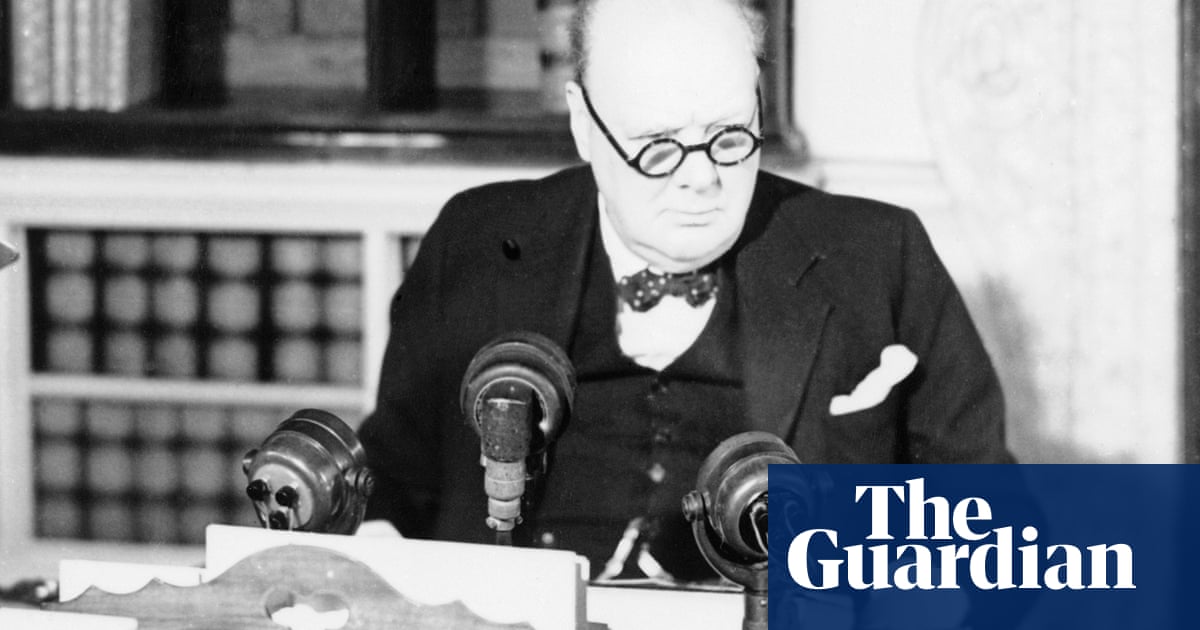At 9.15am the male bird took off and soared towards the reservoir in search of a meal. Sixty minutes later he was back, and over the next hour or so he and his mate took turns sharing the fish he had caught and sitting on their three eggs.
The appearance of these two ospreys on farmland in the Usk valley in mid-Wales is seen as a milestone in the recovery of the species.
It is believed to be the first time a pair has nested and produced eggs in these parts for more than 200 years, and the site is thought to be the farthest south in the UK for a pair that has not been deliberately reintroduced.
“It’s lovely to see them, isn’t it?” said Louise Milne, one of the team of 60 volunteers keeping an eye on the ospreys. “They are a wonder of the world.”
Milne said ospreys usually pair for life, and once a nest has been established it may be used for decades. At the end of the summer the adults – and chicks, if they thrive – will fly separately from the UK to winter in west Africa. The chicks have an innate knowledge of where to go.
“To think of them flying thousands of miles, dealing with the cross winds, being blown out into the Bay of Biscay, vying for space on the beaches and lagoons in west Africa – it’s not surprising you get attached to them and try to protect them while they’re here,” said Milne.
This corner of Powys turns out to be an excellent spot for ospreys. As well the fish in the Talybont reservoir, there are brown trout in the River Usk and bream in Llyn Syfaddan (Llangorse Lake).

On the morning the Guardian visited, the male osprey was seen heading towards the reservoir. He returned with a still-wriggling fish, showed it to his mate on the nest then took it over to a favourite perch nearby to eat his share. “It’s like when the oxygen masks come down in a plane,” said Milne. “You help yourself before helping others.” If the eggs hatch, the male will soon have three more mouths to feed. “He’ll have to up his hunting skills,” said Milne.
Later he had a turn sitting on the eggs while the female took the fish to a perch for her turn.
After being persecuted in the UK to the brink of extinction, a pair of ospreys naturally recolonised Scotland by successfully nesting at Loch Garten in 1954. There are now thought to be about 300 pairs in Scotland.
Ospreys began recolonising north Wales 20 years ago. Over the past decade, the number of sightings of them farther south in Wales has increased.
Young ospreys began to identify the Usk valley as a potential breeding site because of its excellent fishing sites, and in 2023 a nest was spotted at the top of an oak tree near the village of Talybont-on-Usk – but no eggs. In 2024, two ospreys were again seen at the nest but did not breed, possibly because they had arrived late or were not the right age.
This spring, the same two ospreys spotted in 2024 were back, and went on to produce the three eggs.
Their comings and goings are watched carefully by the Usk Valley Ospreys charity, which has been preparing for this happy moment by setting up a webcam trained on the nest, recruiting teams of “watchers” to keep an eye from a canal towpath 400 metres away, and getting an exclusion zone set up around the site to stop people getting too close.
RSPB Cymru said it believed the Usk ospreys were the most southerly breeding pair. There are breeding ospreys at Poole Harbour in England, but the birds there were translocated from Scotland.
Andy King, the chair of Usk Valley Ospreys, was wary of getting too excited as it would be weeks before any chicks hatched. “It’s best to be a bit cautious,” he said.
But he added that it was good news the birds were there – and showed that the rivers, reservoir and lake had good fish stocks.
“They’ve seen the lovely oxbows and the sweeping nature of a very natural course of the river. They’ve been attracted by that. That’s why they’re here in this quiet valley. And people are delighted to see them.”

 12 hours ago
9
12 hours ago
9













































